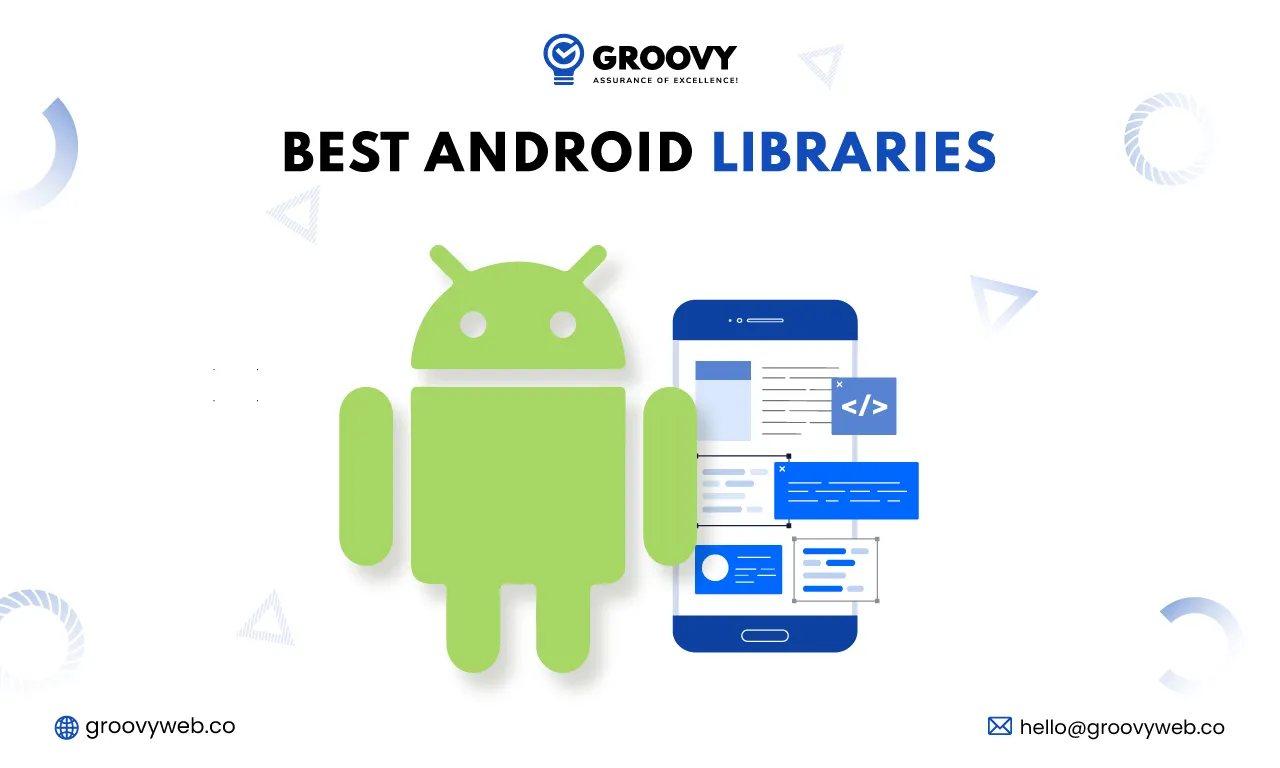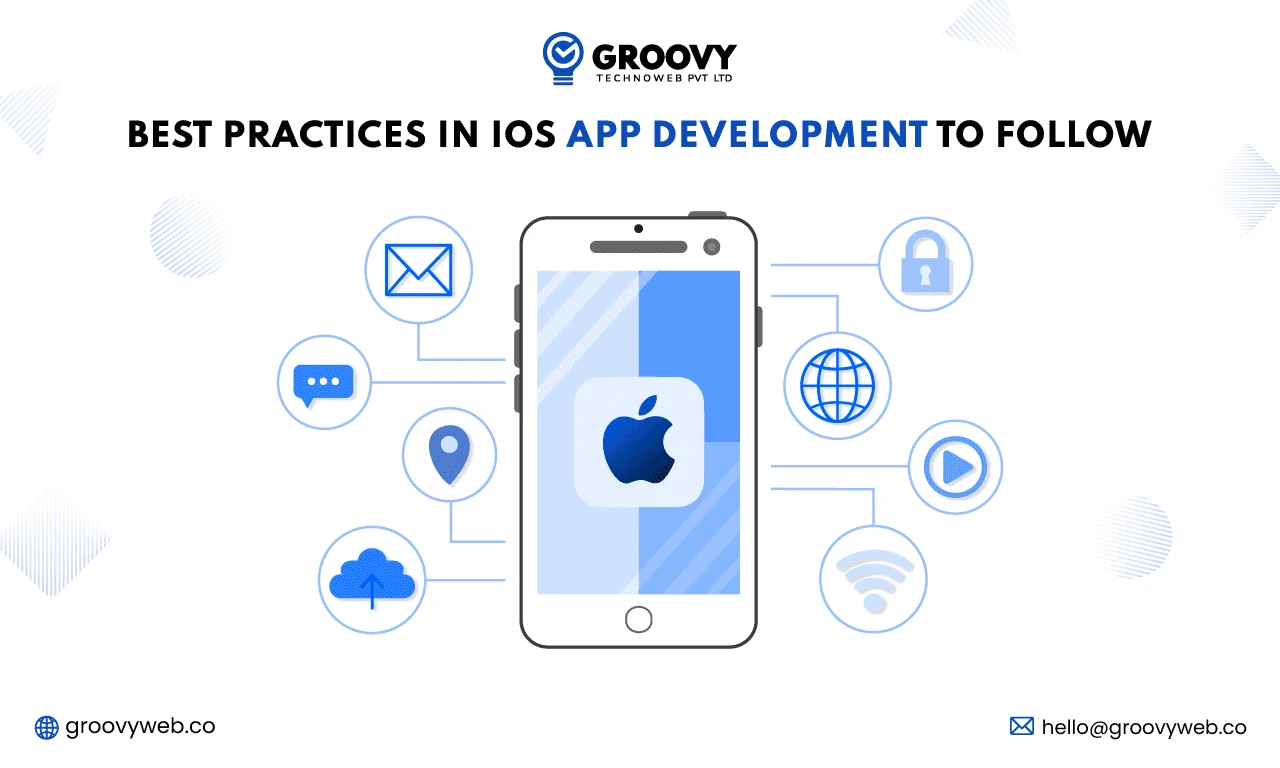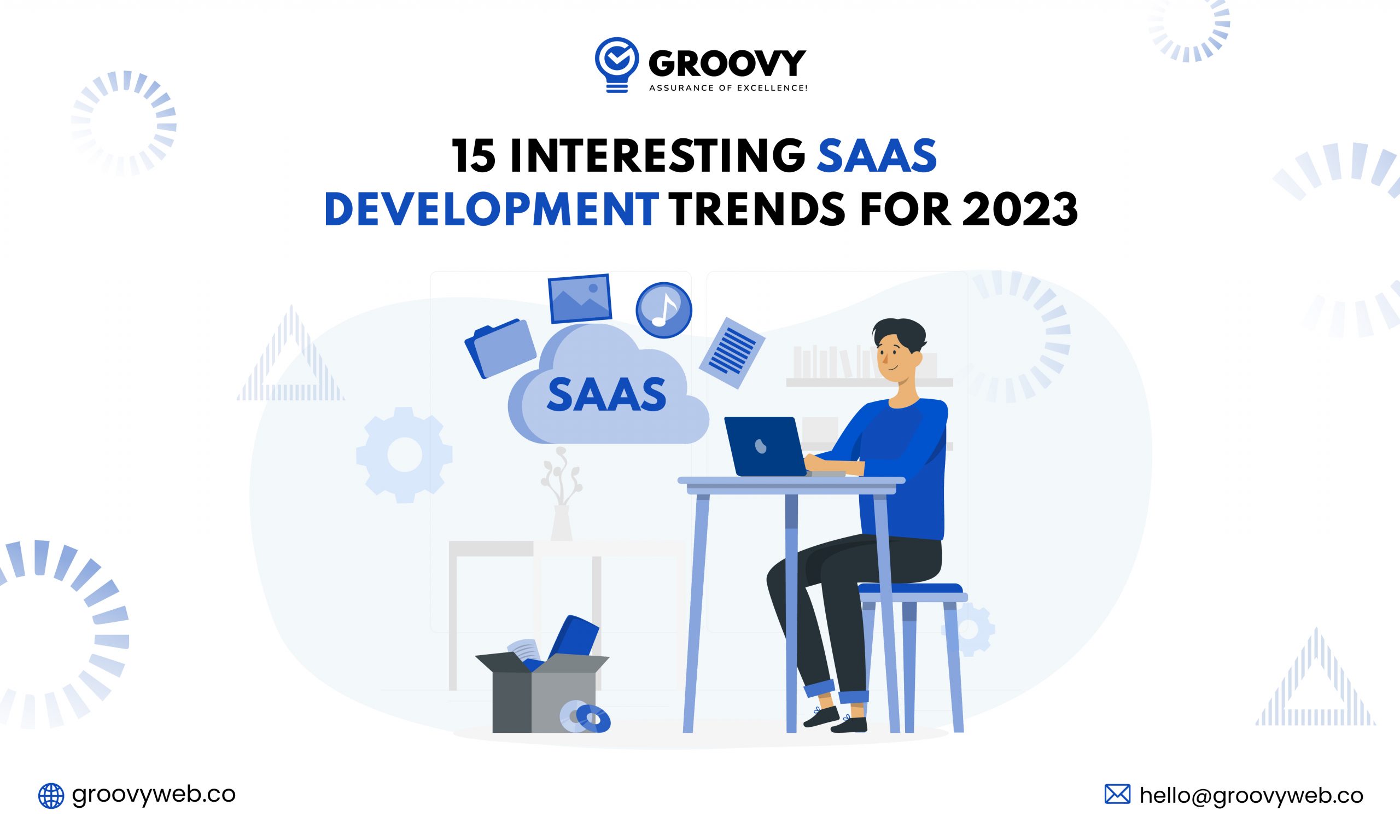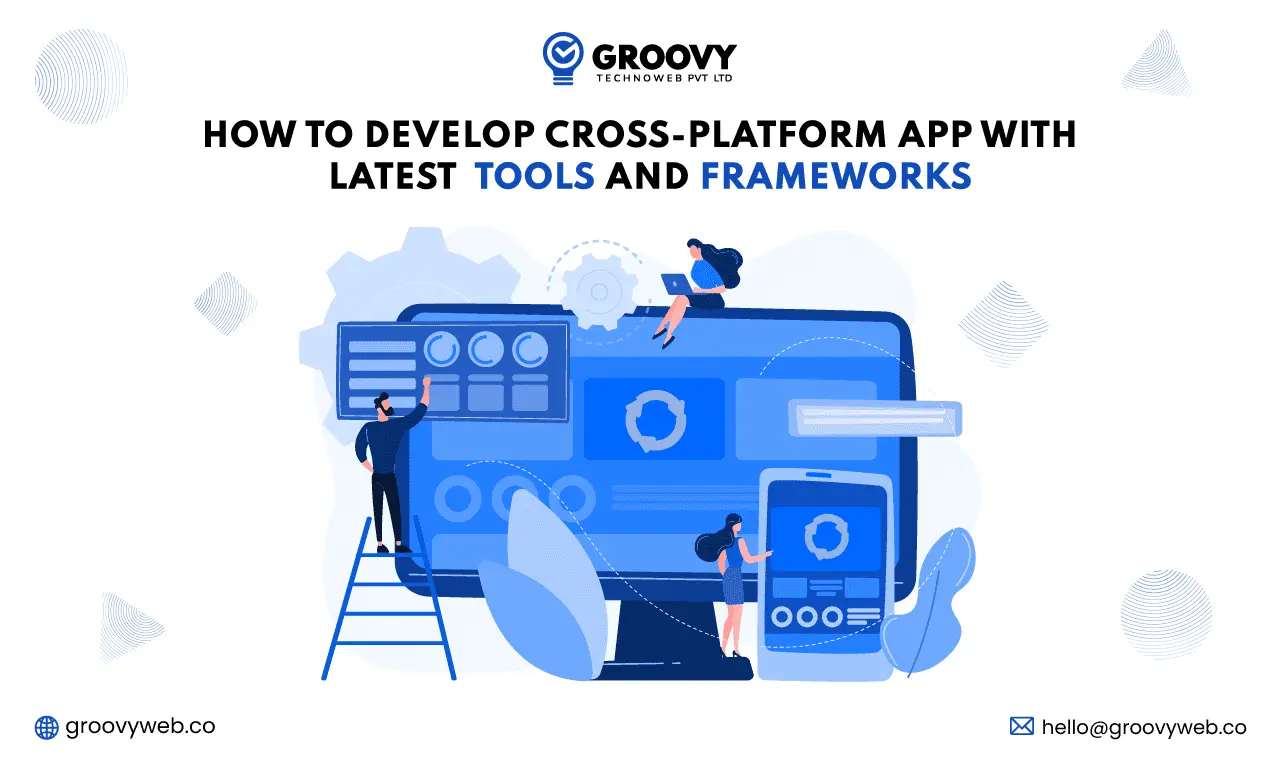Best Android Libraries For The Android App Developers In 2023
Sagar Patel
July 11, 2022 1309 Views
Quick Summary : Android app developers can benefit from Android libraries. We made a top list of the 22 best android libraries you can use to develop Android apps
Google’s Android operating system is popular for touchscreen devices like smartphones and tablets. However, the best android libraries are beneficial to a vast number of platforms and mobile applications because of their usability and easy accessibility.
In addition, it is one of the most widely and best os for android development, particularly in smartphones. Developers of Android apps are becoming more inventive in this area, creating new and interesting apps with various features for the consumers.
iOS is a different OS that is mostly used for Apple mobile devices and is likewise highly well-liked. Users have numerous options because there are so many Android and iPhone cellphones on the market.
This article discusses some developments expected to impact Android in 2022.
As per Statista, with a market share of 75% worldwide and more than 2.8 billion active users, Android is very popular.
Android app developers have been creating many apps to fulfil customers’ needs and service their continually expanding user base.
As a result, 2.89 million apps are currently available through the Google Play Store, exceeding the 1 million mark in July 2013.
As a result, in order to satisfy the wide range of needs and growing demands of Android users, start-ups app developers must considerably innovate. The developers have access to various tools, including Android libraries, to keep experimenting.
Android app developers can benefit from Android libraries. We made a top list of the 22 best android libraries you can use to develop Android apps.
Best Android libraries: What is it, and why is it essential for the android app development
A library and an app module are the same things. Due to this, any file that is required for developing a software application, for example, source code, data files, or manifest files, may be used as well. For instance, an Android app module can reference a library that has been compiled as an AAR file.
StatCounter estimates that in 2021, the market value of Android OS will account for 71% of the total. It is interesting and demonstrates Android’s dominance in the mobile gaming sector.
New features are also being added to new Android smartphones. Users don’t need to pay for the most recent app version to get updated versions of their devices for free.
The Android Libraries allow developers to send automated updates via recurring notifications at specific intervals. In order to keep up-to-date, developers can add new features to their apps, especially for devices with outdated operating systems.
It’s challenging to update between Android platforms. The fact that these are only updated once a year is likewise true. An advantageous aspect of Android is the ability to add support libraries.
22 Best Android Libraries For The Android App Developers In 2022
Groovy web, as a leading Android app development company, aims to create effective mobile apps using the most recent technology and Android libraries. If you want to design an app but are concerned about the expense, look up how much it costs to create an Android app.
We have added the top 22 best android libraries to help you create mobile applications that are more performant and user-friendly. Take a look below:
1. Picasso
Picasso is a well-known and frequently used Android image loading library that Square maintains. With Picasso, you can quickly load images into the program – often by simply writing a single line of code.
Picasso avoids these difficulties by handling ImageView recycling, downloading cancellation in an adapter, enabling complicated picture changes with little memory usage, automated memory, and caching.
2. Dagger 2
One of the beautiful things about Dagger 2 is that it heavily relies on compile-time analysis and estimation of app building and dependencies, as well as Java annotation processors. On the other hand, alternative Java dependency injection libraries have drawbacks, including relying on XML, suffering startup performance costs, or encountering run-time dependency validation problems.
One of the benefits of Dagger 2 is that shared instances can be accessed easily. For example, when you declare singletons in Dagger.
3. Activity Recognition API
By using this API, users can find out what they are doing now, for example, walking, riding, or remaining motionless. The “Request Updates” and “Eliminate Updates” buttons allow Android developers to use this library to request activity updates and stop receiving updates, respectively.
Additionally, the sample uses an IntentService to handle recognised activity changes that are sent via ActivityRecognitionResultobjects. The BroadcastReceiver will allow the IntentService to broadcast a complete list of potentially identified workouts.
4. ButterKnife
Jake Wharton created ButterKnife, a well-known view binding Android library that makes assigning ids to views relatively simple and prevents the overuse of findViewByid. According to the adage “Butterknife is like a dagger, except much less sharp,” view binding is similar to dependency injection. The sole distinction is that ButterKnife uses annotations to produce boilerplate code.
5. EventBus
You could encounter different problems when interacting with each other while developing the best android app with various dynamic components. The best android networking library that primarily uses the publisher/subscriber paradigm to address this issue is definitely EventBus.
With the help of this Android framework and library, communication between components, decoupling, event sending, and the collection has been improved and made more straightforward. This plugin is most effective when combined with activity, fragment, and background threads. This library’s classes are all completely separated from one another, resulting in less complex code that is also simpler to maintain and troubleshoot.
6. Retrofit: Android networking library
Java and Android developers can use Retrofit to create type-safe REST clients that turn an API into a client interface based on annotations. The Async task class had to be run before using the HttpsUrlConnection to retrieve data from a network request, making use of APIs that produced large amounts of data less efficient. Retrofit has now solved this.
Retrofit allows for easy modification of endpoints and headers, adding body parameters and query parameters, and selecting request methods.
7. Android Databinding
The Android Databinding library, which is included in the Android view binding library, needs Android Studio Version 1.3 at the very least to function. This Android view-binding library does not employ annotations, in contrast to ButterKnife.
UI elements in layouts can be linked to data sources in the app using declarative style instead of code.
Below is an example of code that references UI framework functions when defining layouts in activities. To locate the TextView widget, it calls findViewById() when binding the widget to the userName property of the variable viewModel.
8. Lottie
The JSON format used by Adobe After Effects allows it to render natively on mobile devices. With the help of these android native libraries, designers may produce stunning animations within a day.
Additionally, it makes it possible for engineers and designers to quickly copy and paste animation without having to start from scratch. The libraries also enable forward-backwards movement for Android developers. Most significantly, it allows programming animations to react to all user interactions.
9. Object Box
A popular Android data-binding framework called Object Box enables you to focus your valuable time on the product’s various USPs rather than storing and retrieving data. This libraries function as an embedded object-oriented database and is thought to be a suitable replacement for SQLite.
These android libraries are ideal for IoT apps because it has well-written documentation.
10. Glide
One of the best brand-new Android image loading libraries for developers is Glide, another highly regarded image loader that Bumptech runs. Not only that, but Google also recommends it directly.
Glide assists in fetching, decoding, and displaying video calls, images, and animated GIFs in addition to supporting animated GIFs, including image downloading and caching. It is built on HttpUrlConnection. In addition, it offers a versatile API that lets developers integrate any network stack.
11. LiveData
When LiveData changes, Observer objects are immediately informed. In order to change the UI, you can use this Observer object. Because the observer will take care of updating the UI whenever the data changes without causing memory leaks, you don’t need to.
If a back stack activity is running, the observer’s lifecycle will be idle, which means it will not receive LiveData events.
12. ViewModel
The ViewModel libraries are used to store and manage UI-related data in accordance with the lifecycle. You can handle configuration changes using the ViewModel class, such as screen rotations.
The lifespan of UI controllers, including fragments and activities, is managed by ViewModel. As a result of particular user and device activities, the android framework can dynamically create and remove events and actions.
In an Android app, navigation is used to facilitate simple location-based navigation. Only the Navigation Libraries can create navigation in Android apps. Regardless of the target implementation, it only functions with apps that provide a suitable API.
You can also add other components, like Activities, Fragments, to your project in addition to this one if you want. Make sure the Google Maven repository is added to the Navigation dependency list.
14. Hilt
Hilt’s popular dependency injection libraries allow you to automate dependency injection in a mobile app, reducing the administrative burden. Building each class and its dependencies is necessary for manual dependency injection. The containers will also assist in organising and reusing dependencies.
With Hilt, Dagger dependency injection can easily be integrated into Android apps. HiLT aims to simplify custom android application development by integrating Dagger-related infrastructure. The goal was to design a generic framework to facilitate installation, readability/understanding, and code sharing between apps.
15. MyLittleCanvas
One of the best libraries for Android developers is MyLittleCanvas. The library was intended to make working with canvas on Android easier; however, now, objects can be used in place of methods.
The use of this Android module enables features like a personalised underline on a TextView. Canvas also supports the methods TextShape, RoundRectShape, DrawableShape, RectShape, PathShape, LineShape and CircleShape.
16. ExpansionPanel
Another feature-rich toolkit from Florent Champigny allows developers to implement expansion panels (containing creation flows and enabling lightweight editing of an element). You can configure this library to allow only one expansion layout to be open at once.
This library is straightforward to use, and the project itself includes a sample application for developers to test. This library’s source code is also available under the Apache 2.0 licence, and a sample app may be downloaded from Google Play.
17. Stetho
Stetho is a cutting-edge debugging used for Facebook’s Android app development. This package makes it possible to analyse network data using Chrome debugging capabilities. Additionally, this package gives Android developers a simple debugging interface.
Because the developers will always have access to the features of Chrome Developer Tools, which are a component of the Chrome desktop, you may think of it as a formal bridge for Android apps.
You can use the dumpapp tool because you are a developer. This will give the internals of the particular programme a functional command-line interface. The capabilities of the dumpapp tool are extensive and do include not only network and database analysis but also JavaScript console.
18. RxJava2
RxJava2 relies on ReactiveStreams, which is a specification for asynchronous streams with non-blocking backpressure, before comparing the APIs. This library is used to create original Android applications, and ReactiveStreams serve as a specification for building Reactive libraries. RxJava also supports reactive programming and adhering to this standard also enables interpolation with other Reactive Libraries.
By using RxJava2, you can continue to use RxJava1 without changing your code.
Using this package style, you can run both versions at the same time. It’s the same versioning technique as Square Libraries (Retrofit2, OKHTTP3, etc.). You will need to switch your imports over to the new package when making the migration all at once. The majority of problems can be solved by using the find/replace functionality in Android Studio.
19. Espresso
Espresso is undoubtedly the android testing library framework that lets developers build Android UI tests. Espresso is a component of the Android testing support package. It suggests that you can use this library to develop tests and determine whether a TextView’s text is comparable to other texts or not. As a result, the program appears to run on real devices and emulators, as if a real person is using it.
Before using this library, dependencies must be added to the app module build.gradle file.
After accomplishing this, you can configure the instrumentation runner, sync the Gradle files, and then produce a rest file. This is the rationale behind why companies favour Android app packages.
20. Robolectric
Another outstanding unit testing library is Robolectric. In addition to controlling resource loading inflation, this library also maintains other things. It increases the effectiveness and potency of the tests written in the library for carrying out tasks that real devices with Android framework dependencies carry out. Robolectric replicates the Android SDK for the tests; therefore, Mockito and other supplementary mocking frameworks are not required.
Again, you must create a sample test class after adding the dependency to your app’s build.gradle file.
These Android libraries were included based on the developers’ widely-accepted recommendations. Their combined characteristics, attributes, and performance exude excellence in their respective fields of application.
21. Gravity view
The gravity view is currently a trendy android design library. In order to tilt images using sensors, one can utilise this Android UI library. With the use of the Android motion sensors, the Gravity View library aims to give users the ability to rotate their devices to carry out specific tasks.
Since its initial use in the well-known app “Fynd,” this Android UI library has grown to be a favourite of many. Use of this library requires an Android device running version 3.0 or higher. Additionally, you can utilise it with the aid of the accelerometer sensor if you need to use it for non-gyroscope devices.
22. Hyperlog-Android: Android debugging library
As an alternative to the default Android Log class, Hyperlog-Android can be used for debugging. It keeps the ability to store logs in a database like a well-known utility logger Android library.
In addition, it is responsible for debugging them on a remote server. Developers can access log files, and log messages can be stored in a database.
6 Things To Consider While Selecting The Appropriate Android Library
The best Android library for you will rely on the needs you hope to address through its utilisation. There are various Android libraries, each with a particular utility and functionality.
These libraries include dependency injectors, networking, image loading, drawing libraries, scanning, view binding, debugging, reactive programming, UI components, and testing.
Developers Can Choose An Android Library By Considering These Factors

- Popularity: Are developers fond of the library? Has it been warned about severe problems? You can choose the library if you receive good answers to these queries.
- Author reputation: A smart technique to assess the calibre is to look into the author’s reputation with the library. Suppose an author has a solid following on Github and several successful Android libraries. In that case, that speaks highly for the calibre of the author’s library.
- Quality: An revamped README file suggests that adding new features to your programme will be simple. Additionally, note how well-organized the library is.
- License: The licence may impose usage restrictions on a library. To ensure that the library rules are followed in the app into which you wish to integrate the features, it is a good idea to look into the licencing.
- Open source: Transparency issues can be dangerous. Evaluating the performance and quality and troubleshooting by gaining access to the library code is preferable.
- Recommendations for libraries: High-quality libraries include Retrofit, Picasso, ButterKnife, and Glide. They serve as the platform’s de facto libraries. Although these are typically a safe bet, it is better to double-check variables like restrictions, benefits, and features.
- The best results are typically obtained by using tried and true methods. Make sure you have total control over the code so that various use cases can be traded for the library’s fundamental characteristics.
How could Groovy Web help in your Android Development?
Groovy Web, India’s leading iOS App development company, creates apps that integrate a variety of Android features. The Groovy Web team develops Android apps for multi-platform enterprises. We offer a variety of Android services, including consultancy, app development, and deployment across several platforms. Make contact with us to go through the objectives of your project and let us help you succeed.
Written by: Sagar Patel
Sagar Patel is the CTO and Co-founder of Groovy Web. He was involved in the telecommunications & Automation industry during his early career. Still, due to his attitude toward learning anything new and mastering it, he now works as a CTO for Groovy Web. Through their business mindset and logical approach, they have taken their company to the next level; His responsibilities now include all aspects of the business. Among them are finance, process design, and development.
Frequently Asked Questions
We hope these clear your doubts, but if you still have any questions, then feel free to write us on hello@groovyweb.coWhat is Retrofit and what is it used for?
Retrofit is an Android and Java type-safe HTTP client. It is used to make network requests and respond to them in a simple and effective manner. It can also handle data serialized and deserialization, making it a popular choice for API consumption.
What is Butter Knife in android and what is it used for?
Butter Knife is an Android view binding library. It is used to decrease the amount of boilerplate code required to bind views in an app, making code writing and maintenance easier.
What is Glide and what is it used for?
Glide is an Android image loading and caching library. It is used to load and display photos in an app effectively, and it includes capabilities like as image modifications and caching.
What is Dagger and what is it used for?
Dagger is an Android and Java dependency injection library. It is used to handle dependencies between items in a programme, making testing and maintaining code easier.
What is RxJava and what is it used for?
RxJava is a library that uses observable sequences to create asynchronous and event-based programming. It is used in Android to implement Reactive programming, which makes programming with asynchronous data streams simple and manageable.
Related Blog

Rahul Motwani
Best Practices for IOS Mobile App Development
Mobile App Development 09 Mar 2023 9 min read
Ashok Sachdev
15 Interesting SaaS Development Trends for 2023
Software Development 14 Nov 2022 18 min read
Nauman Pathan
How to Develop Cross-Platform App with Latest Tools and Frameworks
Mobile App Development 17 Oct 2023 20 min readSign up for the free Newsletter
For exclusive strategies not found on the blog